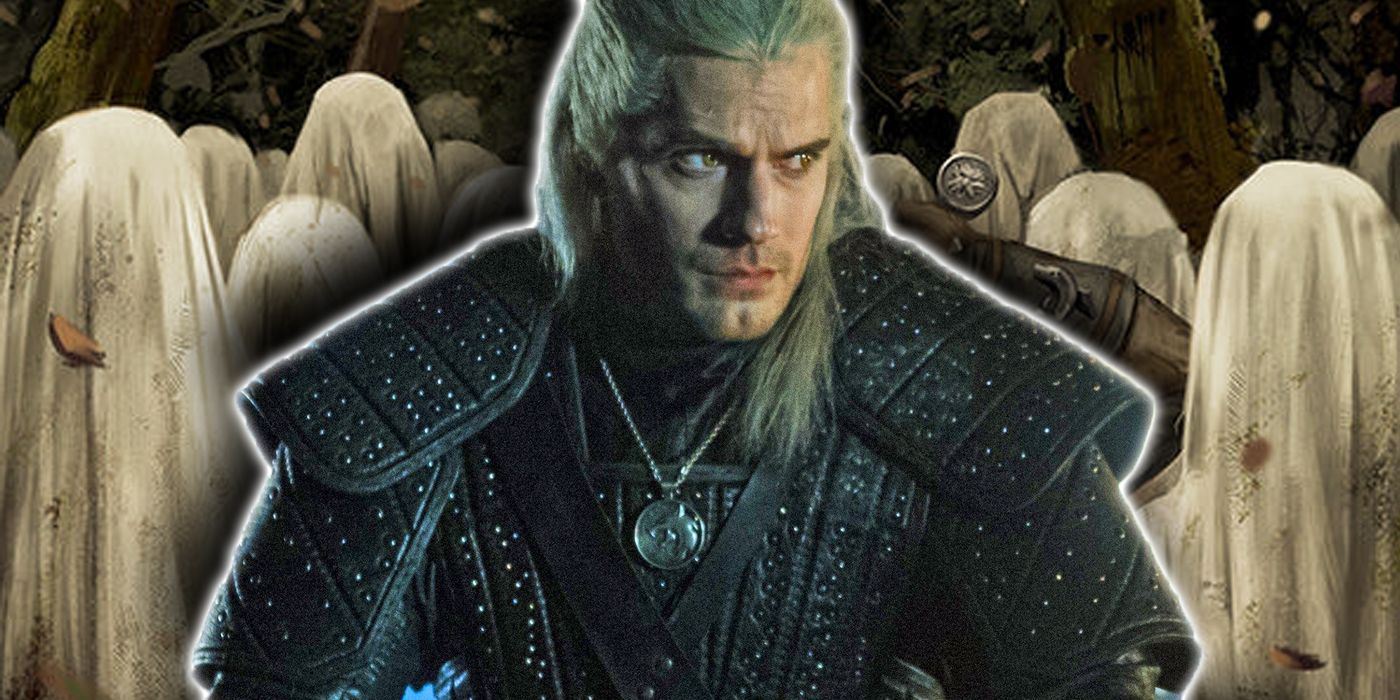In The Witcher: Witch’s Lament comic book series, Geralt must rescue a young woman from a group of witches who have a surprising amount of insight.
WARNING: The following contains spoilers for The Witcher: Witch’s Lament #2 by Bartosz Sztybor, Vanessa R. Del Rey, Jordie Bellaire and Aditya Bidikar on sale now.
Geralt of Rivia, one of the most famous witchers on the entire Continent, has battled against every enemy imaginable. Human mercenaries, soldiers, drowners, nekkers, dragons and a host of other atrocious adversaries have all fallen by the witcher’s blade. But in The Witcher: Witch’s Lament #2 Geralt finds that the latest threat he faces is unlike any other he’s encountered before.
The people of Neisse hired Geralt to capture a witch called a laima. Successful in his job, Geralt stood in deep consternation as he watched the witch burn. The quest was complete, but something rang harsh and discordant deep in Geralt’s heart over the entire affair. Now, a wealthy lord of Neisse has hired Geralt to rescue his daughter Giltine from a group of witches.
Geralt finds the witches’ village deep within a forest. To his relief, Geralt sees that Giltine is fast asleep and unharmed. What seemed to be an exceedingly easy mission takes a hard left turn when Giltine refuses to leave. The witches appear and assure Geralt that Giltine is perfectly safe with them and that he, too, should join them. As much as Geralt distrusts the witches, he sees and senses no immediate danger from them in a bizarre twist.
Soon, Geralt is led by the Witches to what can be best described as a support group. He, Giltine and the witches take their places in a large circle of people. The witches guide the group, telling all present that their purpose is to become honest with their feelings and emotions. Each takes their turn explaining how they feel about their respective struggles. Geralt has absolutely no interest in sharing his thoughts and opinions on any of his emotions or feelings, but he doesn’t take any action in stopping or breaking up the circle.
While the prospect of a therapy group sounds very positive, there’s a certain sense of ominous mystery surrounding it. The witches explain that when they’ve progressed far enough with their therapy that they will be able to go to The Eye. What it is and what its purpose is are unknown to Geralt. The witches also speak of the five phases that each member must enter and pass through before reaching The Eye: Exordium, pain’s recognition; Laudatio, pain’s true cause; Exhortatio, moral admonishment, which ends the lament; Comploratio – mourning; and finally, Consolatio – consolation. The witches speak of how passing through the five paths may help cleanse and ease one’s guilt and pain. They know of the deep guilt that Geralt carries with him — both the guilt of his distant past and the more recent guilt he feels over the death of the laima — and they repeatedly ask him to join their circle to treat that guilt.
It’s unknown exactly what the witches are planning with their secretive coven devoted to group therapy. Is The Eye literally a physical eye or is it a magical portal of some kind? Is it even real? And what will happen when someone successfully confronts it? Despite being far less violent and horrific than the other witches and magic users he’s encountered before, Geralt knows that he can’t trust the witches at face value until he learns more of what their true motives are. Their warning hangs over Geralt on the final page of the issue, and Giltine’s leaving from the witches circle may lead to tragedy.
About The Author
